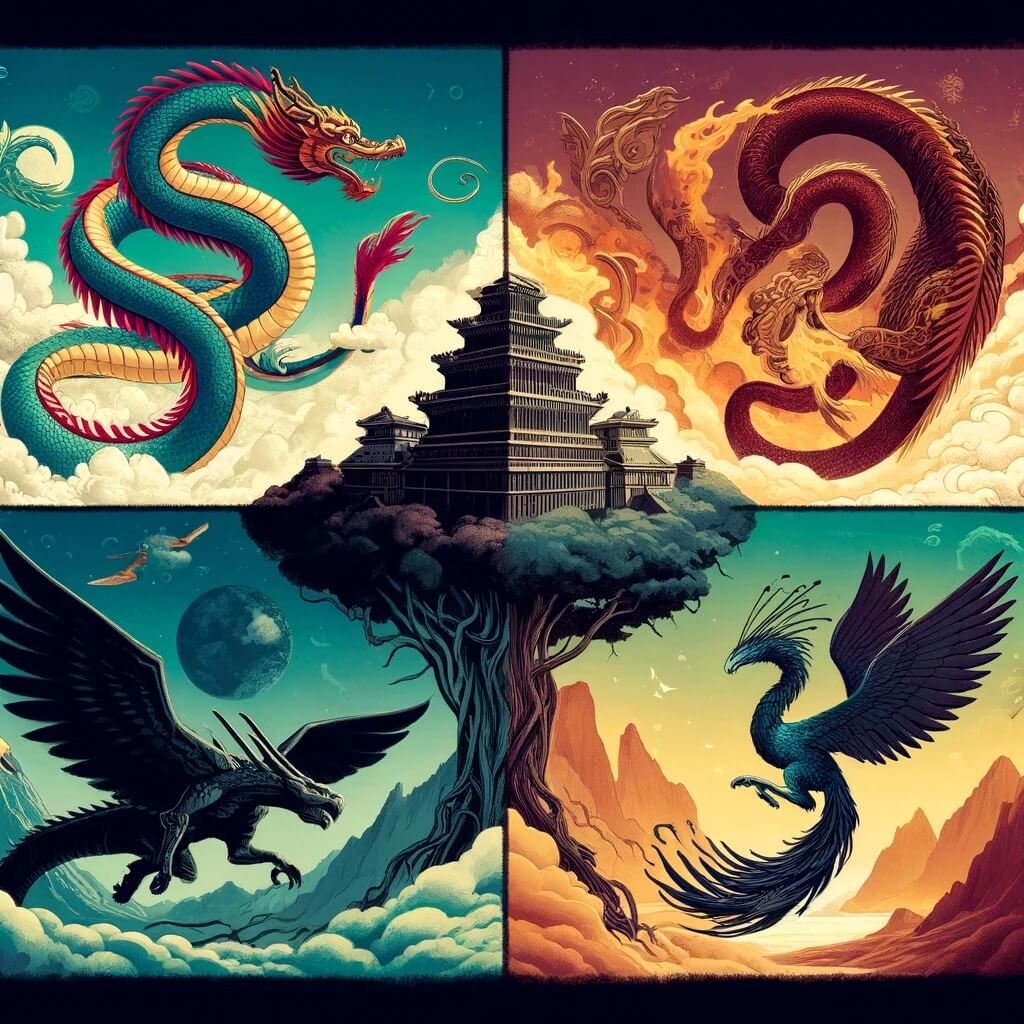Dragon tattoos command attention. You see them etched onto skin, coiled around biceps, breathing fire across backs. They are not merely decorative. They represent something primal, something deeply embedded within the human psyche. The enduring popularity of dragon tattoos hints at a fascination that transcends fleeting trends. It speaks to an intrinsic connection with mythology, power, and the untamed aspects of our own natures.
So, what is it about these serpentine, scaled behemoths that compels us to permanently adorn ourselves with their image? Understanding the multifaceted symbolism of the dragon tattoo requires a journey through diverse cultural interpretations and a consideration of individual motivations.
The Eastern Dragon: Auspiciousness and Benevolence
In Eastern cultures, particularly in China and Japan, the dragon holds a position of veneration. These are not fire-breathing destroyers, but rather benevolent guardians and symbols of auspiciousness. They represent wisdom, longevity, and the potent forces of nature. Unlike their Western counterparts, Eastern dragons are often depicted as wingless, serpentine creatures with lithe bodies and flowing whiskers. They are associated with water, controlling rainfall and ensuring bountiful harvests.
A Chinese dragon tattoo can signify power, good fortune, and protection. Each color variation carries its own specific meaning. A gold dragon signifies wisdom and kindness. A black dragon represents experience and knowledge. Blue or green dragons are associated with healing and growth. The number of claws a dragon possesses is also significant. Dragons with five claws were traditionally reserved for the emperor, while those with four or three claws represented lower ranks in society. This nuanced symbolism adds layers of meaning to the design.
Japanese dragons, often depicted with three claws, are equally revered. They are viewed as guardians of sacred places and bringers of prosperity. A Japanese dragon tattoo often represents balance, harmony, and the interconnectedness of all things. They embody the virtues of courage, perseverance, and benevolence. The specific imagery, such as the dragon clutching a pearl, further amplifies its symbolic weight, suggesting wisdom and spiritual enlightenment.
The Western Dragon: Ferocity and Sovereignty
In Western mythology, dragons often embody different characteristics. While occasionally depicted as wise, more frequently they are portrayed as ferocious beasts guarding hoards of treasure. They represent chaos, destruction, and the untamed power of the natural world. Think of the dragons in Norse mythology, or the dragon slain by Saint George. These creatures are a test of courage, a symbol of overcoming adversity.
A Western dragon tattoo can represent strength, courage, and a willingness to confront challenges. It can also symbolize a connection to one’s primal instincts, a recognition of the darker aspects of human nature. The imagery is often more aggressive, with sharp teeth, menacing claws, and billowing wings. The color red, frequently associated with fire and passion, is a common choice for Western dragon tattoos, emphasizing their fierce nature.
Beyond Cultural Archetypes: Individual Interpretations
While understanding the cultural roots of dragon symbolism is crucial, the meaning of a dragon tattoo ultimately rests with the individual who bears it. Personal experiences, beliefs, and aspirations all contribute to the unique significance of the design. Perhaps the dragon represents a personal struggle overcome, a period of transformation, or a quality that the individual aspires to embody.
Consider the placement of the tattoo. A dragon coiled around the arm might symbolize strength and resilience. A dragon across the back could represent protection and guardianship. The size and detail of the tattoo also contribute to its overall impact and meaning. A small, minimalist dragon might represent a subtle reminder of inner strength, while a large, elaborate design could be a bold statement of power and individuality. The dragon can also be combined with other symbols, such as flowers, skulls, or weapons, to further personalize its meaning. A dragon entwined with cherry blossoms, for example, might represent the fleeting nature of life and the importance of living in the present moment.
The Enduring Allure
The dragon’s enduring appeal lies in its multifaceted nature. It is a creature of myth and legend, embodying both good and evil, strength and wisdom, chaos and order. This inherent duality allows individuals to connect with the dragon on a deeply personal level, imbuing the tattoo with their own unique meaning and experiences. The dragon, whether Eastern or Western in its origin, remains a potent and evocative symbol, a testament to the power of myth and the enduring human fascination with the extraordinary.
Ultimately, choosing a dragon tattoo is a decision steeped in personal significance. It is a permanent declaration of identity, a visual representation of inner strength, and a connection to a timeless archetype. Before committing to such a significant piece of art, it is vital to research the different styles and interpretations of dragon imagery and to carefully consider the message you wish to convey. A well-chosen and thoughtfully designed dragon tattoo can be a powerful and meaningful symbol for years to come.









Leave a Comment